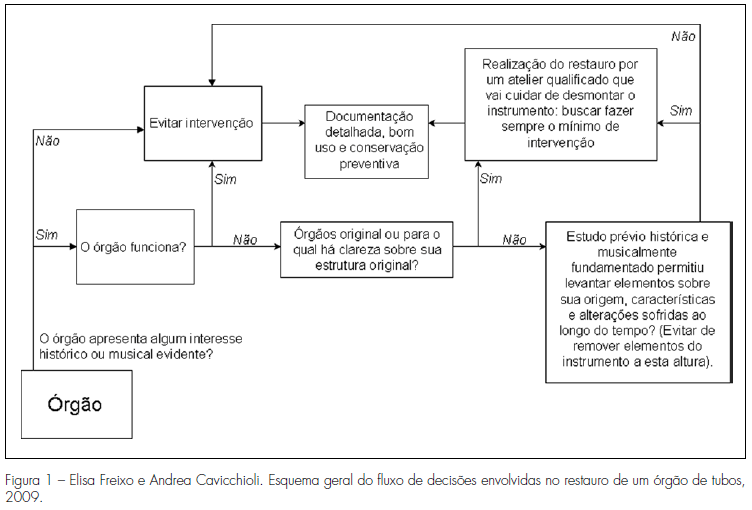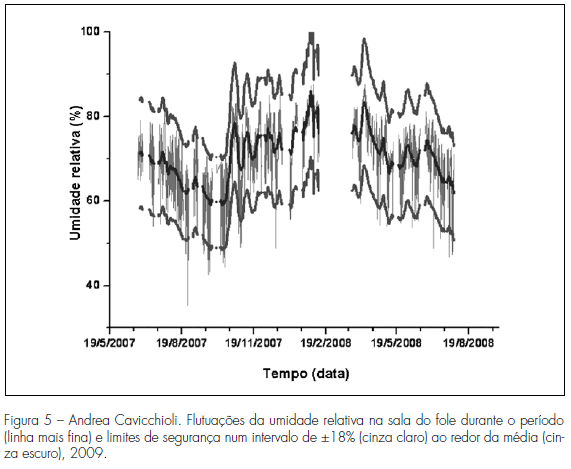Pipe organs have been built in Brazil or imported from elsewhere since the very first decades of the colonial period. Albeit relatively small in number, such instruments have inestimable historical and musical value. Notwithstanding, they are generally in very poor working condition and some have lost much of their original structure and configuration; they are often found in a state of abandonment and, incredible as it may seem, still under the threat of arbitrary interventions performed with no technical expertise or any concern for their historical and musicological significance. This article is an effort to understand how this state of affairs came to be, and discusses principles and criteria for the restoration, maintenance and preventive conservation of this legacy, based on assumptions regarding its original conditions and entitlement to restoration in accordance with the stringent standards already set for artifacts that enjoy the full status of cultural assets, which should also be urgently granted to pipe organs of any time and age.
Pipe organs; Historical and cultural heritage; Restoration; Preventive conservation






